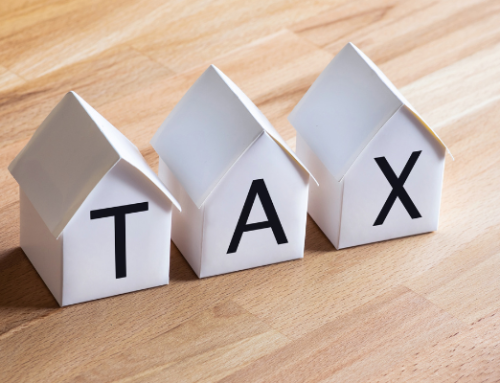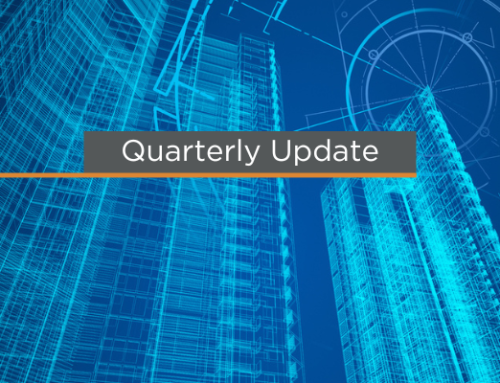COVID-19 hit commercial real estate (CRE) hard. Estimated value declined anywhere from 50 percent to 10 percent, depending on the sector. During this time, many CRE property owners and investors worked with their lenders to restructure debt.
In some places, commercial real estate values can’t support the debt taken on the property, so owners and investors have renegotiated it. Even loan modifications or lender discounts can be seen as providing an economic benefit, which would usually trigger a taxable event.
While these arrangements may have been necessary at the time, debt forgiveness in many situations can result in an unexpected tax liability. Canceled debt is usually added to gross taxable income unless the taxpayer is insolvent or declares bankruptcy.
There’s another way for real estate owners and investors to defer income tax on canceled or forgiven debt without bankruptcy or insolvency. Qualified real property business indebtedness (QRPBI) can be a great tax planning opportunity, especially with a looming recession on the heels of the pandemic.
Can Tax Due on Canceled Debt Income Be Deferred?
Normally, when a debt is discharged, it’s included in taxable gross income.
There are two general exceptions for when canceled debt is excluded from income: Chapter 11 bankruptcy or insolvency. Insolvency is when liabilities exceed the fair market value of assets, which is determined immediately before the debt cancellation.
In real estate, where partnerships are more common than C- or S-corporations, insolvency is harder to achieve. It’s determined at the partner level, not entity level. Struggling real estate partnerships have another option: qualified real property business indebtedness (QRPBI).
QRPBI is debt incurred in connection with real property used in a trade or business. The debt is secured by the property, which must have been acquired on or after January 1, 1993. Qualified debt applies to loans used to acquire, construct, reconstruct, or substantially improve real property.
Deferring the taxability of canceled debt income applies to debt discharged before January 1, 2026.
QRPBI Rules and Limitations
The question for some real estate partnerships is whether the property and associated debt rise to the level of a qualified trade or business.
QRPBI doesn’t apply to discharged debt related to property that’s developed and then held primarily for sale; for example, a developer took out a loan to build 10 rental units. The loan is secured by the real property, and even though the property’s fair market value has declined, it is being held for sale or lease.
The distinction lies in the property’s use in a qualified trade or business: real property held for lease is a depreciable asset whereas real property held for sale is inventory.
Under QRPBI, the amount that can be excluded from taxable income is limited to:
- The QRPBI outstanding principal amount, less
- The fair market value of the real property, minus any other QRPBI on the property.
- Further, income can only be excluded to the extent the basis can be reduced in depreciable real property.
As an example, an owner secures a business loan for a commercial office building in 2018 for $2 million. The property secured the loan and was thus used in the owner’s regular course of business. In 2021, the building owner entered an agreement with the bank in which $250,000 of the debt was canceled. Immediately prior to the agreement, the outstanding principal balance was $1.5 million. Fair market value was assessed at $1.25 million, and the adjusted basis of the building was $1 million. The owner can exclude the entire $250,000 canceled debt from taxable income and the building’s depreciable basis has been adjusted.
Under QRPBI, the basis of depreciable real property must be reduced by the amount of excluded income. In this way, the forgiven debt that’s excluded from taxable income is essentially swapped with a lower fair market value of the property in question.
A reduction in basis is first applied to the property that’s securing the discharged debt, then to other depreciable property, which can include residential property but not inventories or stock in trade. The basis adjustment applies on the first day of the taxable year immediately following the debt discharge, or immediately before the property is disposed of before the end of the taxable year.
In the example above, the building owner would include the canceled debt income on the current year return and adjust the basis of the real property as of January 1 of the following year.
QRPBI only applies to a single item of real property and C-corporations cannot use it.
For partnerships, applicable QRPBI is determined at the partnership level; however, basis adjustments are done at the partner level.
How to Elect QRPBI
To claim QRPBI and report the exclusion, real estate partnerships would need to file Form 982. Form 982 is due with the annual federal tax return in the year the debt exclusion is deferred from gross income, either by the original due date or the extension due date. An amended return can be filed within six months of the tax return’s due date (including extensions) if the taxpayer didn’t file Form 982 to begin with.
If filing an amended return, taxpayers would need to include “Filed pursuant to section 301.9100-2” at the top.
Partnerships will want to review lease terms and rental arrangements to ensure the property meets IRS standards as well as a qualified trade or business. Properties involving triple net leases require careful attention.
For questions about QRPBI or other commercial real estate issues, contact Ryan Paul, CPA, a Partner in PBMares’ Construction and Real Estate practice.





